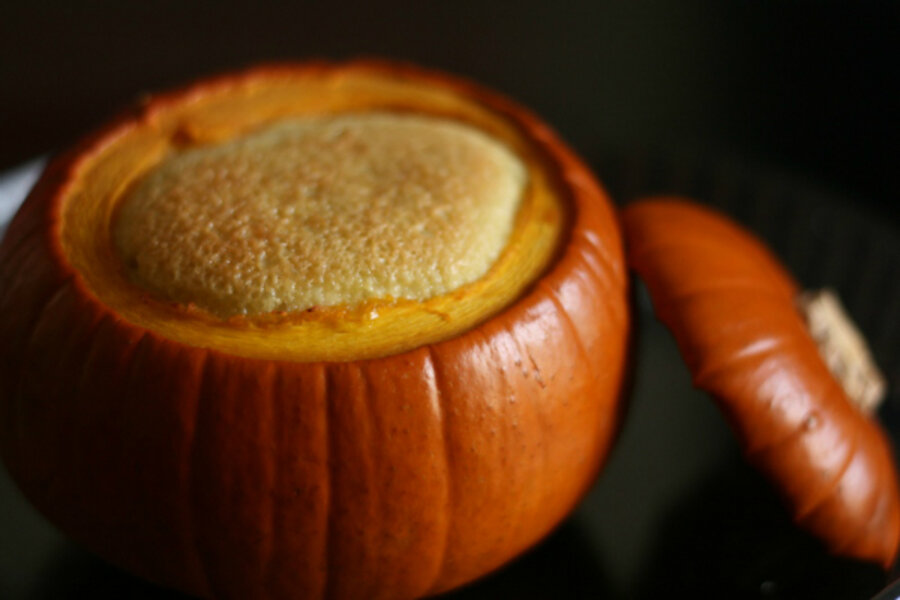Hollowed-out pumpkins are filled with coconut custard in this delightful dessert that Phiroum Svy learned how to make from her grandma in Cambodia . When the pumpkin is cut, each wedge shows off the creamy yellow custard contrasting beautifully with the orange pumpkin flesh. Traditionally, larger pumpkins are used but Phiroum prefers to use cute little sugar pumpkins for individual servings. Instead of steaming the pumpkin, I decided to bake it in a water bath. The pie pumpkin I used was 1-3/4 pounds.
Time: 1 hour 30 minutes (15 minutes active)
Makes: 4 to 8 servings
1 (1-1/2 to 2-pound) pie or sugar pumpkin
3/4 cup coconut milk
1/2 cup organic sugar
3 eggs
1. Preheat your oven to 325 degrees F. Position the rack in the lower 1/3 of your oven.
2. Wipe the pumpkin with a damp cloth to remove any dust or dirt. Slice the top off the pumpkin straight across. You may have to cut out some pumpkin flesh to expose the cavity. Scrape out the seeds and stringy bits with a spoon. Save the seeds for toasting if you wish.
3. In a medium bowl, whisk the coconut milk and sugar together. Crack the eggs into the bowl and whisk until just incorporated.
4. Prepare a water bath by placing a lightly oiled pie plate in a metal baking or roasting pan with sides at least 1-inch high. Put the pumpkin in the pie plate. Using a ladle, carefully pour the custard into the pumpkin cavity to only about three-quarters full (since the custard will rise and poof up). If you spill custard over the sides of the pumpkins, wipe clean with a damp cloth. Pour water into the baking pan until it reaches about 1/2 to 1-inch, depending on your pan. Bake for 1 hour 15 minutes to 1 hour 30 minutes, or until the custard is set, i.e. it doesn’t jiggle when shaken and a knife inserted into the center comes out clean.
5. Carefully remove the pumpkin from the oven and allow to cool to room temperature. It will be quite fragile, so don’t move it until cooled. Refrigerate for 10 to 12 hours to let the custard set even further. The custard will fall a little but don’t fret!
6. Cut the pumpkin into 4 to 8 wedges, depending on how hungry your guests are, and serve cold or warm (heat it up in the microwave). Use a spoon to scoop up some pumpkin flesh together with the custard, making sure you get a little of each with every bite.
Pat’s Notes: You’ll probably have extra custard. Pour excess into a ramekin and microwave on medium for 2 to 3 minutes. Start checking at the 2 minute mark.
Read the full post on Stir It Up!








